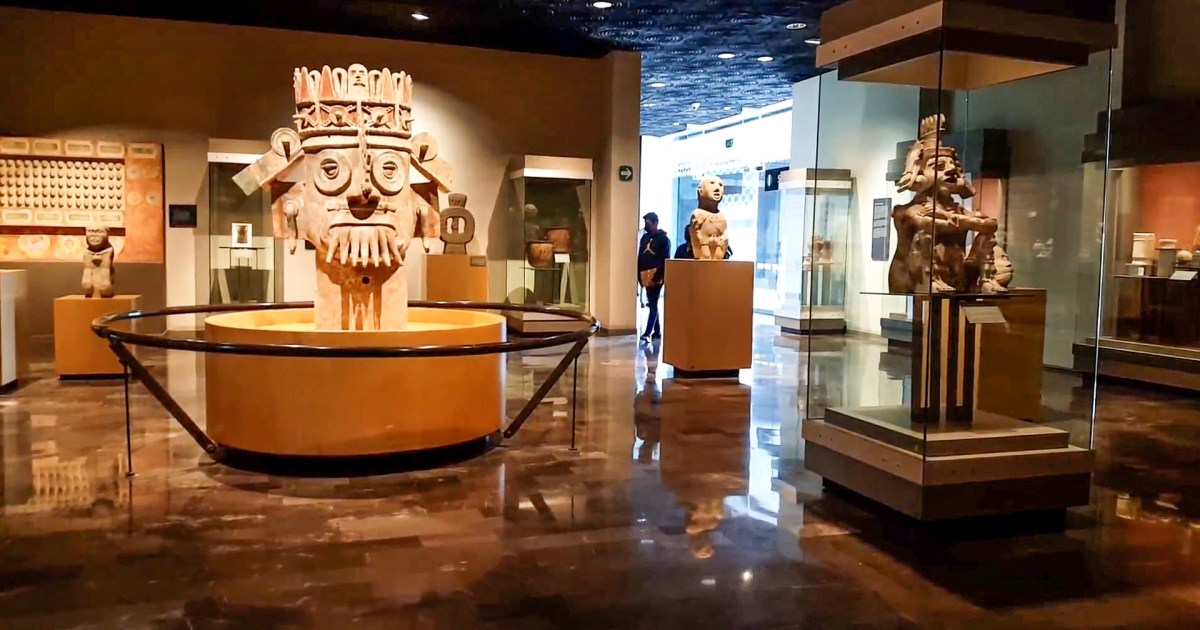The National Museum of Anthropology in the Mexican capital, Mexico City, is visited by millions of tourists annually, because it contains the largest collections of ancient art in the world.
Built in the Chapultepec Forest, the largest natural park in the Americas, the museum draws visitors' attention with its thousands of priceless artifacts and assets.
The museum is globally famous for containing a wide range of assets dating back to the ancient civilizations of Mexico and Central America. It is also considered the first in Mexico because it includes antiquities dating back to before the arrival of the Spaniards to the American continent, and the advancement of modern science and arts in the region.
According to museum officials, this humanistic edifice has turned into one of the most distinguished museums in Mexico and the world, thanks to the fact that it contains a wide range of antiquities and anthropology dating back to multiple cultures that lived hundreds of years ago in the region.
Museum history
The museum was built in 1875 under the supervision of the Spanish architect Cubas Marquec, at the request of King Alfonso VII of Spain.
The museum's content was enriched by the addition of many artifacts dating back to different cultures, such as the peoples of Africa, Europe, America, Asia and the Atlantic Ocean, in addition to Mexico.
In September 1964, the current headquarters of the National Museum of Anthropology was opened, and scholars in the new headquarters have made exceptional efforts to search for, preserve, display and publicize the most important archaeological and ethnographic collections in Mexico over the past fifty years.
Highlights
The sunstone is also known as the "Aztec calendar", which was discovered during excavations and excavations, the statue of "Zochibelle" (one of the deities in the Aztec era), and the statue of "Mectelantiquitli" (the god of death and the underworld in the Aztec civilization);
One of the museum's most famous and exciting collections.
Meanwhile, the statue of the Aztec deities "Coatlico" and the "Tezuc stone" (Aztec stone) are among the most valuable artifacts in the collections of the National Museum of Anthropology.
The 24-ton "sunstone" was discovered in Mexico in 1790, during the construction of the Metropolitan Cathedral, and is one of the most important architectural masterpieces in the country's history.
At the entrance to the museum is an exhibition that chronicles the cultures that grew and flourished in Central America, providing visitors with a detailed historical account of the cultures that lived in the region.
Artifacts from the Mayan civilization
On the second floor of the museum, artifacts dating back to the Mayan civilization are displayed, most notably the tomb of the Mayan King "Bacal" discovered by the famous Mexican archaeologist Alberto Rose in 1948.
According to archaeologists, the discovery of the tomb of King "Pakal" is of similar importance historically to the discovery of the burial chamber of the pharaoh "Tutankhamun" (Pharaonic Egypt), so this relic is of great interest to museum visitors.
It is estimated that Pakal, who was crowned king of the Maya at the age of twelve, ruled the region until his death at the age of eighty.
In the tomb of King "Pakal" at the National Museum of Anthropology, visitors can also view the "funeral mask" made of jade (a type of precious stone) of the king, and many of his personal belongings decorated with various precious stones.

